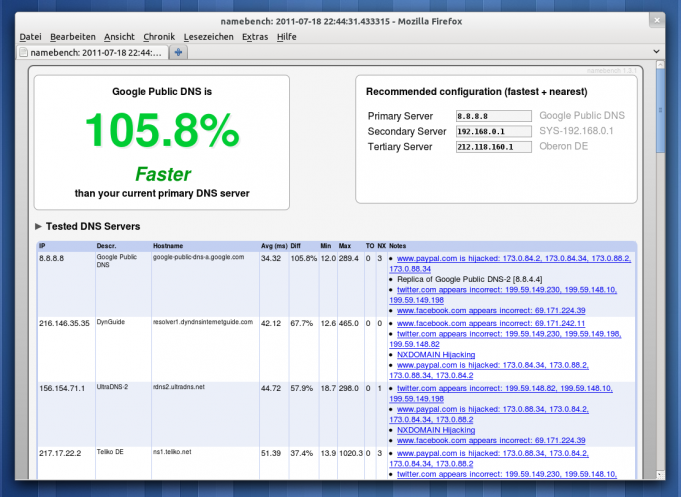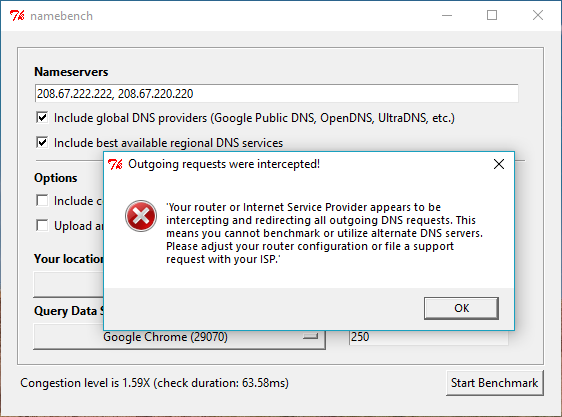

If you'd rather stick with Windows, trim it down to the bare essentials. While that'll work for a lot of Lifehacker readers, it won't for everyone. Which OS should you pick? You've suggested several options, as well as some good ones for netbooks (which may do just as well for old machines), but generally that means some flavor of Linux. Instead, it's better to just say goodbye to the machine as you know it and give it a lightweight operating system it can run with ease. Sometimes your computer is just old and any speed gains you can tweak out of it are not going to be worth your time.

If you want to learn more about how DNS can speed up your browsing times, check out our guide.Ĥ. The test can take a little while to complete, so run it, take a break, and come back to better DNS server suggestions.
Namebench for android free#
Namebench is a free utility for Windows, OS X, and Linux that'll run tests to figure that out for you so you can optimize your DNS settings. The problem is, which servers you ought to be using will depend on your location. The amount of time you spend waiting for a site to load can be a bit faster if you're using the best DNS servers. Speed up browsing times by optimizing your DNS settings It works on OS X as well, but we prefer Onyx.ĥ.

On Windows, CCleaner will get the job done. It's a good idea to perform these tasks yourself on a monthly or bi-monthly basis. Perform system maintenance and optimization Modern operating systems perform maintenance tasks on their own, but these automated routines aren't perfect. Once there, change your Upload rate to "Don't limit", or if you're familiar with your network's upload bandwidth and want to exercise a little more control, pick an upload limit that you're comfortable with in the Limit to field.Ħ. On Windows, Click Dropbox in the system tray, then Preferences > Bandwidth on Mac, click Dropbox in the menu bar, then Preferences > Network > Bandwidth > Change Settings. You can limit it to any speed yourself, or remove that limit entirely: You don't have to let Dropbox choose for you.

Instead of maximizing your connection, it automatically choices whatever speed it believes is optimal. You can only upload as fast as your connection allows, but Dropbox - by default - limits your upload speeds no matter what. Speed is probably not the first priority of the ROM that comes with your device, so do a little research to see what's available and if you can flash something better.Ĩ. For those of us still running 4.0 or earlier and who are bothered by speed issues, choosing a speed-optimized ROM can help remedy the issue.
Namebench for android android#
When Android 4.1 Jellybean is released (and actually on real devices), the OS' sluggishness might be a thing of the past. You'll get a rundown of which apps are using how much space so you can delete them, or at least delete some of the data they're saving on your device. Head on over to the Settings app, tap General, and then tap Usage. If you're running iOS, you don't get an automatic method for cleanup but you can view what's taking up all that space. Most Android users can migrate data to a microSD card and call it a day, but if you're rooted you can use an app like SD Maid to clean things up automatically.


 0 kommentar(er)
0 kommentar(er)
